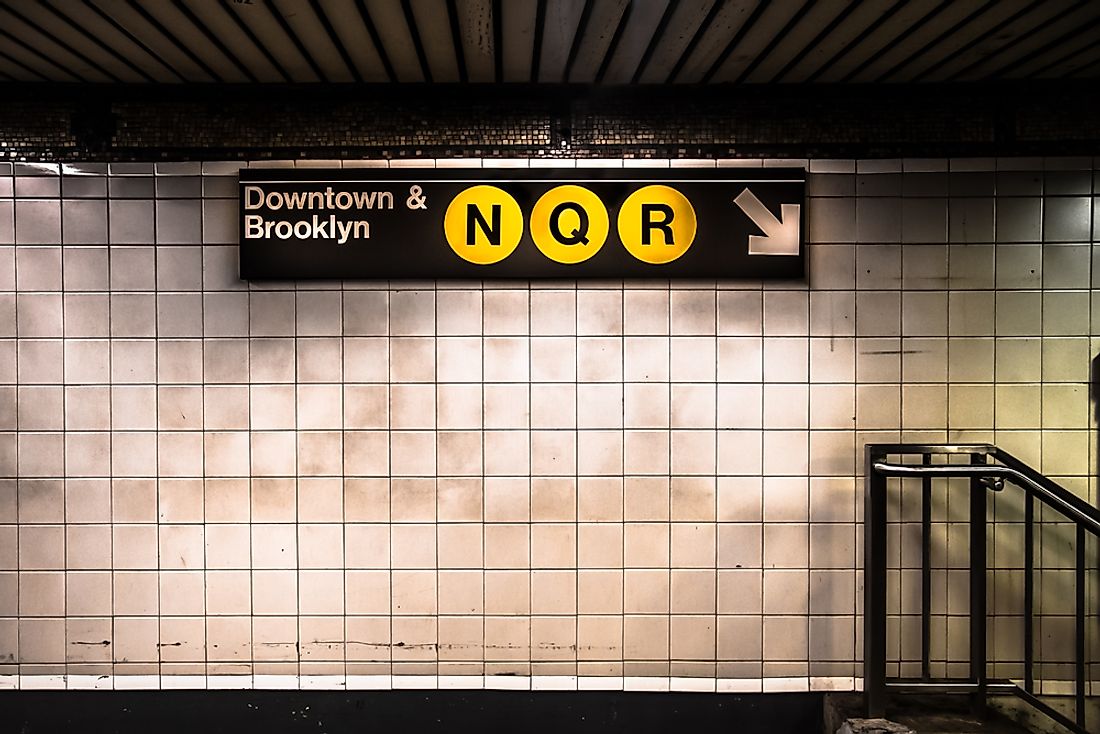Which Subway System Has the Most Stations?

The New York City Subway has a total number of 472 stations, more than in any other subway system. These stations are spread across the entire city and are found in all of New York’s boroughs including the Bronx, Manhattan, and Brooklyn. The subway is also the busiest, not only in the Americas but in the entire Western Hemisphere. With an annual ridership of over 1.76 billion passengers, the subway is the world’s second-busiest outside Asia. The average ridership per day on the subway stands at about 5.7 million. The daily ridership record was set on September 23rd, 2014, when over 6.1 million passengers rode the New York City Subway.
Description
Established in 1904, the subway is among the oldest rapid transit systems in the world. The subway is made up of 36 lines and 25 services. The subway has a total length of 850 miles, and a route length of 245 miles, the longest in the United States. New York City Subway is comprised of about 6,418 cars, where a single train can pull between 8 and 11 cars. Some of the longest trains in the subway are 600 feet in length. The trains in the subway system have an average speed of 17 miles per hour, but they can attain a maximum speed of 55 miles per hour. The entire subway system runs on a 1,435-milimeter standard-gauge rail. The trains rely on a third rail for their electricity whose voltage averages at 625 V but can be as high as 650 V.
History
Plans to construct a subway system in New York were approved by the city in 1894, with construction starting six years later, in 1900. Operation in the subway commenced in October 27th, 1904, a day that saw the trains ferrying a total of 0.15 million passengers. The subway was then made up of two privately-operated lines. Over the 20th century, the subway underwent expansion project that increased its length and ridership. Poor management and maintenance of the subway in the 1970s and 80s made ridership numbers plummet to record lows. During this troubling period, insecurity in the subway stations was high while the trains were defaced with graffiti. The 21st century brought with it new challenges to the subway, beginning with the 2001 terrorist attacks which caused several stations to be closed and services suspended. Hurricane Sandy that hit the city in 2012 flooded some installations of the subway.
Operations
Ownership of the subway belongs to New York City, but the New York City Transit Authority manages its operations. About 59% of the stations in the subway system are entirely underground, while 39% of them are built on the surface. Only two stations out of the total 472 stations do not operate 24-hours each day. To access the underground station's several well-lit staircases have been built from the city streets. For disabled people, elevators have been built from the ground level and are currently found in 118 subway stations. For efficient fare payments, a digital fare system was introduced in 1993 known as the MetroCard.
Which Subway System Has the Most Stations?
| Rank | City | Number of Subway Stations |
|---|---|---|
| 1 | New York | 424 |
| 2 | Shanghai | 324 |
| 3 | Seoul | 307 |
| 4 | Beijing | 306 |
| 5 | Paris | 302 |
| 6 | Madrid | 301 |
| 7 | London | 270 |
| 8 | Moscow | 207 |
| 9 | Guangzhou | 199 |
| 10 | Shenzhen | 199 |











